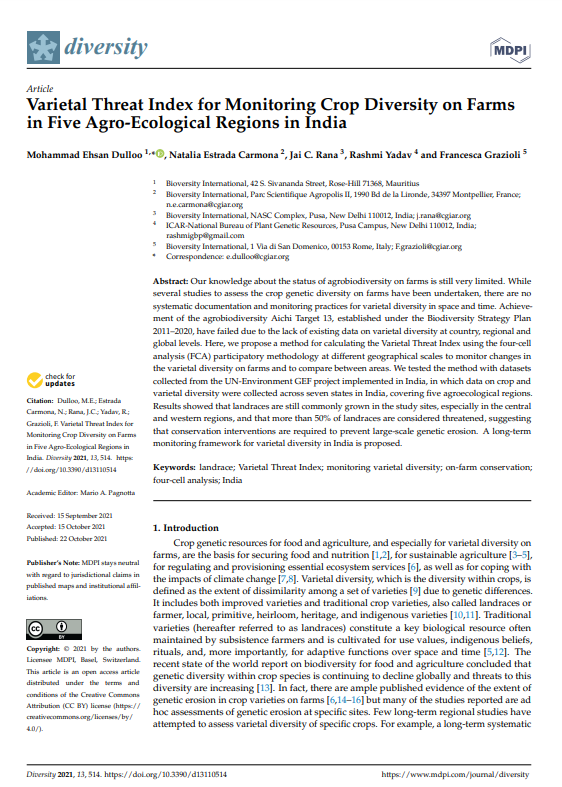Our knowledge about the status of agrobiodiversity on farms is still very limited. While several studies to assess the crop genetic diversity on farms have been undertaken, there are no systematic documentation and monitoring practices for varietal diversity in space and time.
Achieve ment of the agrobiodiversity Aichi Target 13, established under the Biodiversity Strategy Plan 2011–2020, have failed due to the lack of existing data on varietal diversity at country, regional and global levels. Here, we propose a method for calculating the Varietal Threat Index using the four-cell analysis (FCA) participatory methodology at different geographical scales to monitor changes in the varietal diversity on farms and to compare between areas.
We tested the method with datasets collected from the UN-Environment GEF project implemented in India, in which data on crop and varietal diversity were collected across seven states in India, covering five agroecological regions. Results showed that landraces are still commonly grown in the study sites, especially in the central and western regions, and that more than 50% of landraces are considered threatened, suggesting that conservation interventions are required to prevent large-scale genetic erosion. A long-term monitoring framework for varietal diversity in India is proposed.![]()
Dulloo, Mohammad Ehsan; Estrada Carmona, Natalia; Rana, Jai Chand; Yadav, Rashmi; Grazioli, Francesca.

